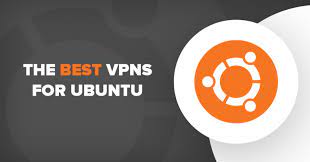Enhancing Digital Security: Safeguarding Your Online Presence
The Importance of Security in Today’s Digital World
In an age where our lives are increasingly intertwined with technology, the importance of security cannot be overstated. From personal data to financial information, we rely on digital systems to store and manage a wealth of sensitive information. As such, ensuring the security of these systems is paramount to safeguarding our privacy and protecting ourselves from cyber threats.
One of the key aspects of security is data protection. With the rise of online transactions and cloud storage, ensuring that our data is encrypted and stored securely is crucial in preventing unauthorised access. Companies and individuals alike must implement robust security measures to prevent data breaches and protect sensitive information from falling into the wrong hands.
Another critical area of concern is network security. As we become increasingly connected through the internet, the risk of cyber attacks targeting networks and systems has grown exponentially. From malware to phishing scams, hackers are constantly looking for vulnerabilities to exploit. Implementing firewalls, intrusion detection systems, and regular security updates are essential steps in fortifying network defences.
Furthermore, personal security practices play a vital role in safeguarding against cyber threats. Simple measures such as using strong passwords, enabling two-factor authentication, and being cautious about sharing personal information online can go a long way in protecting oneself from malicious actors.
Ultimately, security is not just a technical issue but a mindset that should be ingrained in our daily interactions with technology. By prioritising security at every level – from individual behaviours to organisational policies – we can create a safer digital environment for everyone.
Eight Key Benefits of Robust Security Measures: Safeguarding Data, Privacy, and Trust in the Digital Age
- Protects sensitive data from unauthorised access
- Prevents identity theft and fraud
- Safeguards financial information from cyber attacks
- Ensures privacy in online communications and transactions
- Reduces the risk of malware infections and data breaches
- Enhances trust and credibility with customers and clients
- Helps comply with regulatory requirements and industry standards
- Promotes a sense of safety and confidence in using digital technologies
Six Crucial Drawbacks of Security Measures: Complexity, Complacency, and Costly Challenges
- Security measures can be complex and difficult to implement for non-technical users.
- Over-reliance on security software may create a false sense of security, leading to negligence in other security practices.
- Constantly evolving cyber threats make it challenging to stay ahead of potential vulnerabilities.
- Security breaches can have severe consequences, including financial loss, reputational damage, and legal implications.
- Stringent security protocols may impede user convenience and productivity, leading to frustration and resistance towards compliance.
- The cost of implementing comprehensive security measures can be prohibitive for individuals and small businesses.
Protects sensitive data from unauthorised access
In today’s digital landscape, one of the key benefits of robust security measures is their ability to protect sensitive data from unauthorised access. By implementing encryption protocols, access controls, and authentication mechanisms, organisations and individuals can safeguard confidential information such as personal details, financial records, and proprietary data from falling into the hands of cybercriminals. This proactive approach not only prevents data breaches and identity theft but also instils trust and confidence in users who rely on secure systems to keep their information safe and private.
Prevents identity theft and fraud
In today’s digital landscape, one of the significant advantages of robust security measures is their ability to prevent identity theft and fraud. By safeguarding sensitive personal information such as financial data, login credentials, and personal details, security protocols act as a barrier against malicious actors seeking to exploit vulnerabilities for fraudulent purposes. Implementing strong authentication methods and encryption techniques helps ensure that individuals’ identities remain protected, reducing the risk of falling victim to identity theft schemes and financial fraud. Maintaining a secure digital environment is crucial in preserving trust and confidence in online interactions while mitigating the potential impact of cybercrime on individuals and organisations alike.
Safeguards financial information from cyber attacks
In today’s digital landscape, one of the significant advantages of robust security measures is their ability to safeguard financial information from cyber attacks. By implementing encryption protocols, secure payment gateways, and stringent access controls, organisations and individuals can protect sensitive financial data such as bank account details, credit card information, and transaction records from malicious hackers. This proactive approach not only instils trust and confidence in online transactions but also mitigates the risk of financial fraud and identity theft, ensuring that financial assets remain secure and protected in an increasingly interconnected world.
Ensures privacy in online communications and transactions
In today’s digital landscape, one of the key advantages of robust security measures is their ability to safeguard privacy in online communications and transactions. By encrypting data and implementing secure protocols, security mechanisms ensure that sensitive information shared over the internet remains confidential and protected from prying eyes. This not only instils trust among users engaging in online interactions but also helps prevent unauthorised access to personal details, financial data, and other confidential information, thereby upholding individuals’ right to privacy in the digital realm.
Reduces the risk of malware infections and data breaches
Security measures play a crucial role in reducing the risk of malware infections and data breaches. By implementing robust security protocols, such as firewalls, antivirus software, and encryption methods, organisations and individuals can significantly lower the likelihood of malicious attacks that could compromise sensitive data. Proactive security measures not only help prevent malware from infiltrating systems but also create barriers that deter cybercriminals from gaining unauthorized access to valuable information. In today’s digital landscape, prioritising security is essential in safeguarding against potential threats and maintaining the integrity of data assets.
Enhances trust and credibility with customers and clients
In today’s digital landscape, prioritising security not only protects sensitive data but also enhances trust and credibility with customers and clients. By demonstrating a commitment to safeguarding their information, businesses can instil confidence in their clientele, fostering long-term relationships built on a foundation of trust. When customers feel assured that their data is secure, they are more likely to engage with a company’s services and share personal information, leading to increased loyalty and positive word-of-mouth recommendations. In this way, investing in robust security measures not only protects against potential threats but also strengthens the bond between businesses and their valued customers.
Helps comply with regulatory requirements and industry standards
Security plays a crucial role in helping organisations comply with regulatory requirements and industry standards. By implementing robust security measures, businesses can ensure that they meet the necessary criteria set forth by regulatory bodies and industry best practices. This not only helps in avoiding potential fines and penalties but also builds trust with customers and partners who expect their data to be handled securely and in accordance with established guidelines. Prioritising security not only protects sensitive information but also demonstrates a commitment to upholding ethical standards and legal obligations within the digital landscape.
Promotes a sense of safety and confidence in using digital technologies
Security in digital technologies promotes a sense of safety and confidence among users, reassuring them that their personal information and online activities are protected from potential threats. Knowing that robust security measures are in place instils trust in the reliability of digital platforms and encourages users to engage more freely with technology without fear of privacy breaches or cyber attacks. This sense of security fosters a positive relationship between individuals and digital tools, enabling them to fully harness the benefits of technology with peace of mind.
Security measures can be complex and difficult to implement for non-technical users.
One significant drawback of security measures is their complexity, which can pose challenges for non-technical users. Implementing robust security protocols often requires a deep understanding of technical concepts and procedures that may be unfamiliar to those without a background in IT. Non-technical users may find it daunting to navigate through encryption methods, firewall configurations, or network settings, leading to potential gaps in their security posture. This complexity can create barriers for individuals and organisations seeking to strengthen their defences against cyber threats, highlighting the need for user-friendly solutions and accessible resources to bridge the gap between technical intricacies and practical implementation for all users.
Over-reliance on security software may create a false sense of security, leading to negligence in other security practices.
An inherent con of security measures is the risk of over-reliance on security software, which can inadvertently breed a false sense of security among users. Relying solely on technological solutions may lead individuals or organisations to neglect other essential security practices, such as regular software updates, employee training on cybersecurity best practices, and maintaining strong password protocols. This over-dependence on security software could create blind spots in overall security strategies, leaving systems vulnerable to sophisticated cyber threats that can bypass automated defences. It is crucial to strike a balance between utilising security software and implementing comprehensive security measures to mitigate risks effectively.
Constantly evolving cyber threats make it challenging to stay ahead of potential vulnerabilities.
In today’s digital landscape, the ever-evolving nature of cyber threats poses a significant challenge in staying ahead of potential vulnerabilities. As malicious actors adapt and develop new techniques to breach security measures, organisations and individuals must continuously update their defences to mitigate risks effectively. The dynamic nature of cyber threats demands proactive monitoring, swift response strategies, and ongoing education to keep pace with the evolving tactics of cybercriminals. Failure to address these challenges promptly can leave systems exposed to exploitation, highlighting the critical need for a vigilant and adaptive approach to cybersecurity in an increasingly interconnected world.
Security breaches can have severe consequences, including financial loss, reputational damage, and legal implications.
Security breaches can have severe consequences that extend far beyond the initial breach itself. The aftermath of a security incident can result in significant financial loss for individuals and businesses, as sensitive data may be compromised or stolen. Moreover, such breaches can lead to reputational damage, eroding trust among customers and stakeholders. In addition to financial and reputational repercussions, security breaches can also have legal implications, with potential fines and legal actions being taken against organisations that fail to adequately protect their data. It is clear that the impact of security breaches can be wide-ranging and long-lasting, underscoring the critical importance of robust security measures in today’s digital landscape.
Stringent security protocols may impede user convenience and productivity, leading to frustration and resistance towards compliance.
Stringent security protocols, while essential for safeguarding sensitive information, can inadvertently hinder user convenience and productivity. The need for complex passwords, frequent authentication procedures, and restricted access to certain resources may create barriers that slow down workflow and impede efficiency. Users may feel frustrated by the additional steps required to comply with stringent security measures, leading to resistance and potential non-compliance. Balancing robust security practices with user-friendly solutions is crucial to ensure that security protocols do not become obstacles to productivity and user satisfaction.
The cost of implementing comprehensive security measures can be prohibitive for individuals and small businesses.
In today’s digital landscape, one significant drawback of security measures is the financial burden they can impose, especially on individuals and small businesses. The cost of implementing comprehensive security protocols, such as advanced encryption software, firewalls, and regular security audits, can often be prohibitive for those with limited resources. This financial barrier may force individuals and small businesses to compromise on security measures, leaving them vulnerable to cyber threats and potential data breaches. As a result, striking a balance between robust security practices and budget constraints becomes a challenging dilemma for many in the digital realm.






